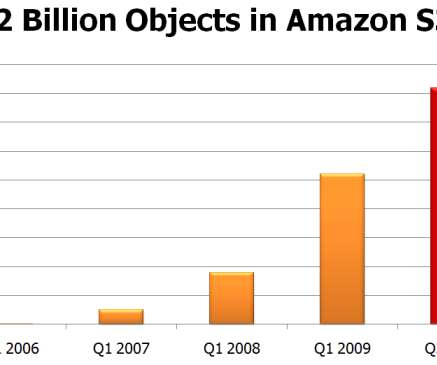82 Billion Objects in Amazon S3
All Things Distributed
NOVEMBER 9, 2009
At the end of Q3 2009 we counted over 82 billion objects in Amazon S3. Congrats to the team for providing such a rock solid service! When looking at the graph keep in mind that the first 4 markers are a year apart, but the last one only 6 months.








































Let's personalize your content